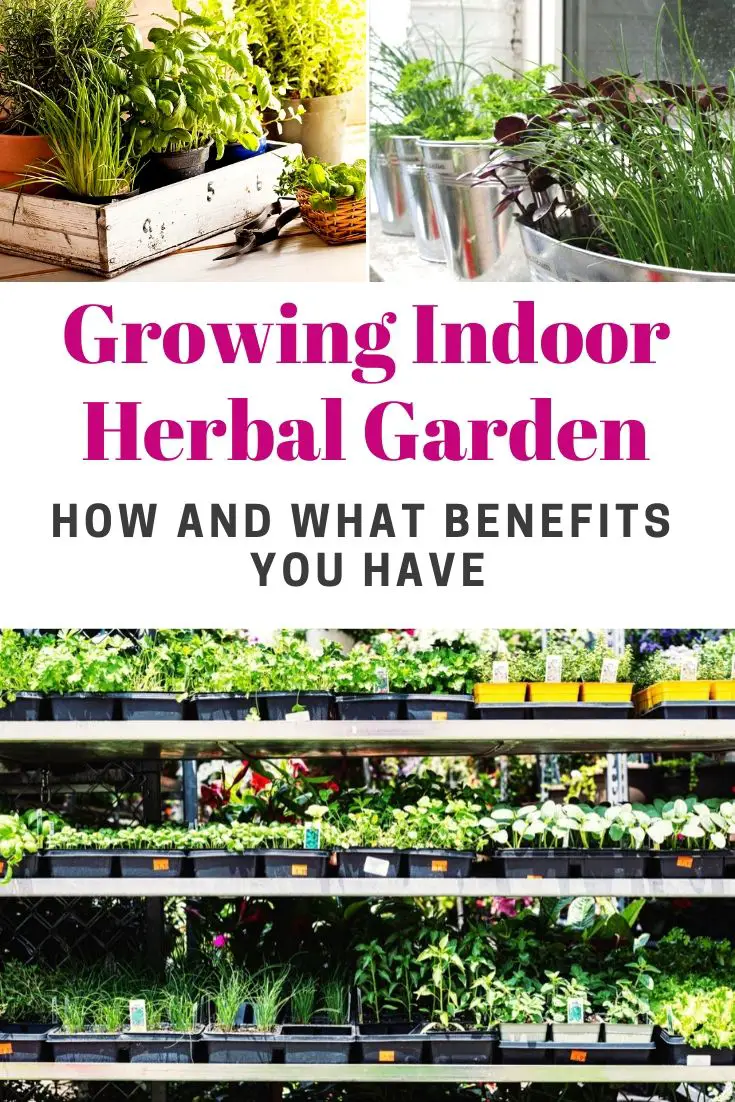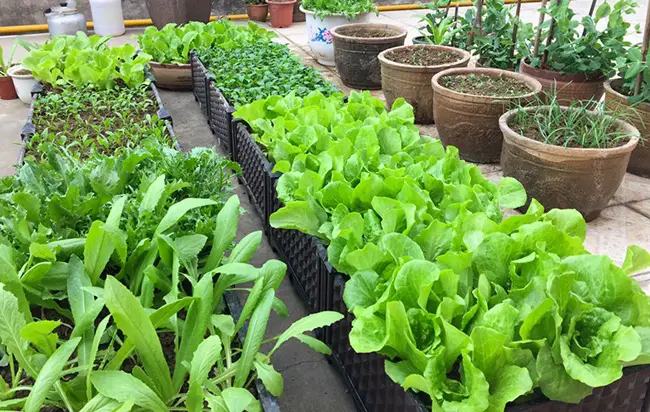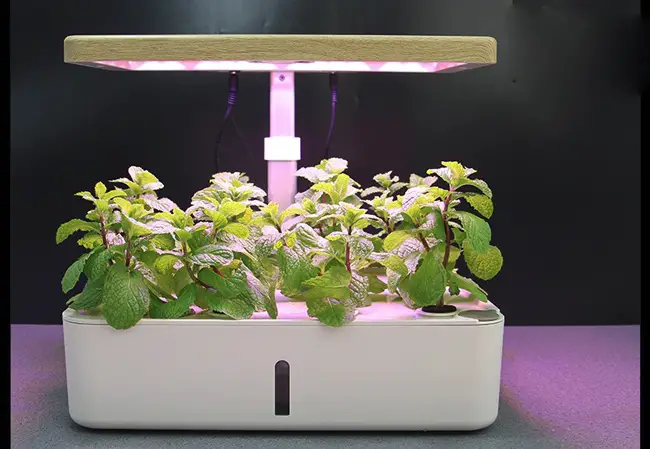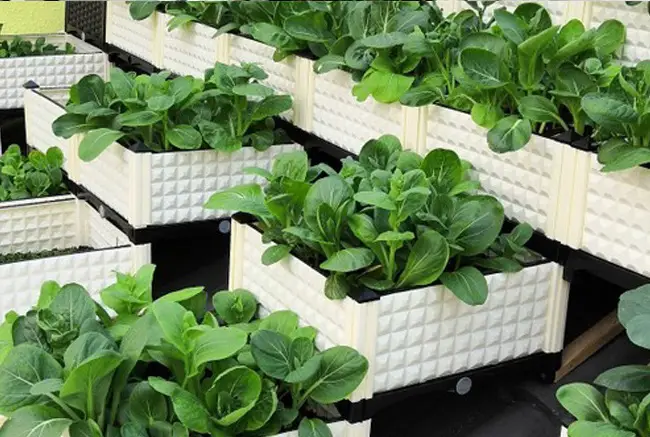The same herbs that you grew outside, you can also grow them indoors from seeds with little time and effort. Decide on an ideal location in your home for them because, like all plants, different ones have different needs.
Indoor Edibles
Eating a fresh garden salad made with vegetables grown indoor edibles from an indoor garden in January is a treat that one can only enjoy. Being able to pick and enjoy edible vegetables right from your window sill or right out of your indoor garden will be rewarding.
Many herbs and vegetables can be grown indoors in winters, such as basil, parsley, rosemary, cherry tomatoes, and various lettuces. Once you start growing your edibles indoors in winter, you will love it and always want an indoor garden.
Many people don’t realize that some of the same edible vegetables grown outside can also be grown indoors under the right conditions. Herbs such as basil, parsley, sage, rosemary, oregano, and dill can be grown in containers on a windowsill with good southern exposure for light or on a countertop with a grow light.
For edibles to be grown indoors, seeds may be hard to find, so buy a good supply in early spring. They become hard to find by late summer and early fall.
Remember that when you are growing your herbs indoors, you will have control of the soil moisture, lighting, and temperature, and these conditions will have to base on your home’s environment.
Control of the environment sometimes makes it easier to grow herbs indoors from seeds that you normally have trouble growing outdoors. When growing your herbs, good southern exposure to sunlight is ideal because your plants will need a minimum of 8 hours of sunlight, so a grow light may become necessary for adequate light.
Growing Herbs Indoors Without Sunlight
If there is not enough sunlight indoor, you can still make use of artificial light. Florescent lights placed close to the plants have been known to work equally as well. One way to know if your plants are receiving enough light is to watch their leaves to make sure they are not falling off for any reason or fading, or maybe the plant itself is becoming long and leggy. These are sure signs that your plants need more light.
Room Temperature
Another concern is room temperature. If the inside temperature becomes too dry, misting your herbs will give them the added moisture they need, or as an alternative, you can place their pots into trays and add water allowing the plant to absorb the humidity as the water evaporates, so be prepared to re-fill the trays often.
Don’t allow the nighttime temperature in your garden room to drop below 60. Remember, it is winter, and most garden plants don’t fare well in cold temperatures. Keep in mind that being able to harvest your own fresh edible vegetables from an outdoor or an indoor garden is always rewarding.
Pollinating
When starting your garden, factor in the room temperature and light conditions, and the pollination of your plants. You can control the room temperature and add light with the use of grow lights and warm white fluorescent light, but the pollinating will have to be done manually.
Many indoor gardeners use an artist’s brush to help with plant pollination and find that it works quite well when distributing the pollen from one plant flower to another.
Use lightweight soil mixes for your indoor growing. A good example is potting soil mixed with vermiculite, perlite, and peat, which will keep the soil from becoming compact. With the lack of humidity in many homes watering nearly every day or every other day will be essential, and fertilize every two weeks with a good organic fertilizer.
Another point to remember is that vegetable plants grown indoors are just as susceptible to pest problems as those grown outside. If you have house plants, they can also attract insects such as spider mites and whiteflies to your vegetable plants, so the use of insecticidal soap will be beneficial inside closed windows and doors.
Plant pests can become a problem to your herbal garden also and seem to appear out of nowhere. Once you see these insects crawling or flying around your herbs, make some warm soapy water (a mild detergent) and use your hands to cover the base of the plant and swirl the plant in the water to wash the leaves stems off. This will kill any insects or pests and will not harm or cause damage to the plant itself.
Another way is to mix warm soapy water in a spray bottle and saturate the leaves and stems, making sure that you soak the underside of the leaves as well to kill any hatchlings or eggs. If you follow these few simple guidelines, your indoor herbal garden will flourish, and you can enjoy fresh herbs for eating and cooking all winter long.
The Benefits of Growing Herbs Indoors
No matter where people live, whether it is on a farm, in the suburbs, or the heart of a city, it is still possible to bring fresh plants into your life.
It may not be possible to plant an outdoor garden in some instances, especially if you live in an apartment building. Still, plants can be grown in an enclosed space with relatively modest effort as you consider the kind of plants you may wish to grow, whether flowers, ferns, or herbs. You can be satisfied knowing that it will be an enriching and satisfying experience.
If you are new to the world of gardening, you should consider starting with some aromatic herbs since the benefits of growing herbs indoors are numerous and will outweigh the original investment of setting up an indoor herb garden.
Many herbs give off a fragrant scent that is absolutely pleasing, and on a practical note, they are a great substitute for innumerable trips to the grocery store.
Packed herbs, whether frozen or dried, are still tasty, but nothing compares to the flavor of a herb just plucked from a live plant, and you immediately notice the difference in your pesto once you switch from store-bought basil to the fresh sprigs out of your windowsill container.
If you keep a few potted herbs in the kitchen, you simply snip off however much is needed for the evening meal. In fact, it’s very easy to grow basil, parsley, and chives together in a single pot.
A great benefit of growing herbs indoors is that it turns many of the annual herbs into perennials. By keeping annuals outdoors, they will start to die off at the end of summer as the coming cold nights weaken the herbs and make them lose their flavor. Moreover, by the time the first frost hits, there is nothing that you can do except pulling the plants up and adding them to the compost heap.
Even perennials that are left outdoors go into a period of dormancy over the cold winter. By mid-September, it’s not possible to harvest as many herbs as you would like. This means that you won’t be able to enjoy fresh herbs for over half of the year.
Instead, by growing herbs indoors, they’ll survive all year round since their growing conditions do not change dramatically from the heat of summer to the chill of winter – in fact, even in the middle of January, you can pluck fresh mint and make a steaming cup of tea.
It is possible to transfer some of your herbs from the garden to indoor pots when the weather starts to cool, although it is not always advisable because repotting causes a bit of stress, weakening or even killing them.
In addition to that, many plants have a hard time adjusting to the staid conditions of the indoors after having spent several months outside in the rain and sunshine. Instead of growing herbs indoors all year round, they adjust to the conditions of the house and flourish.
As you can see, the benefits of growing herbs indoors are numerous: they brighten up your home, they add flavor to your food, they cut down on your grocery bill, and they allow you to have a fresh and healthy harvest all year round.

Read also:
- Mistakes Of Indoor Herb Gardening and How To Avoid Them
- How to Start Growing Vegetables Indoors (Complete Guide)



